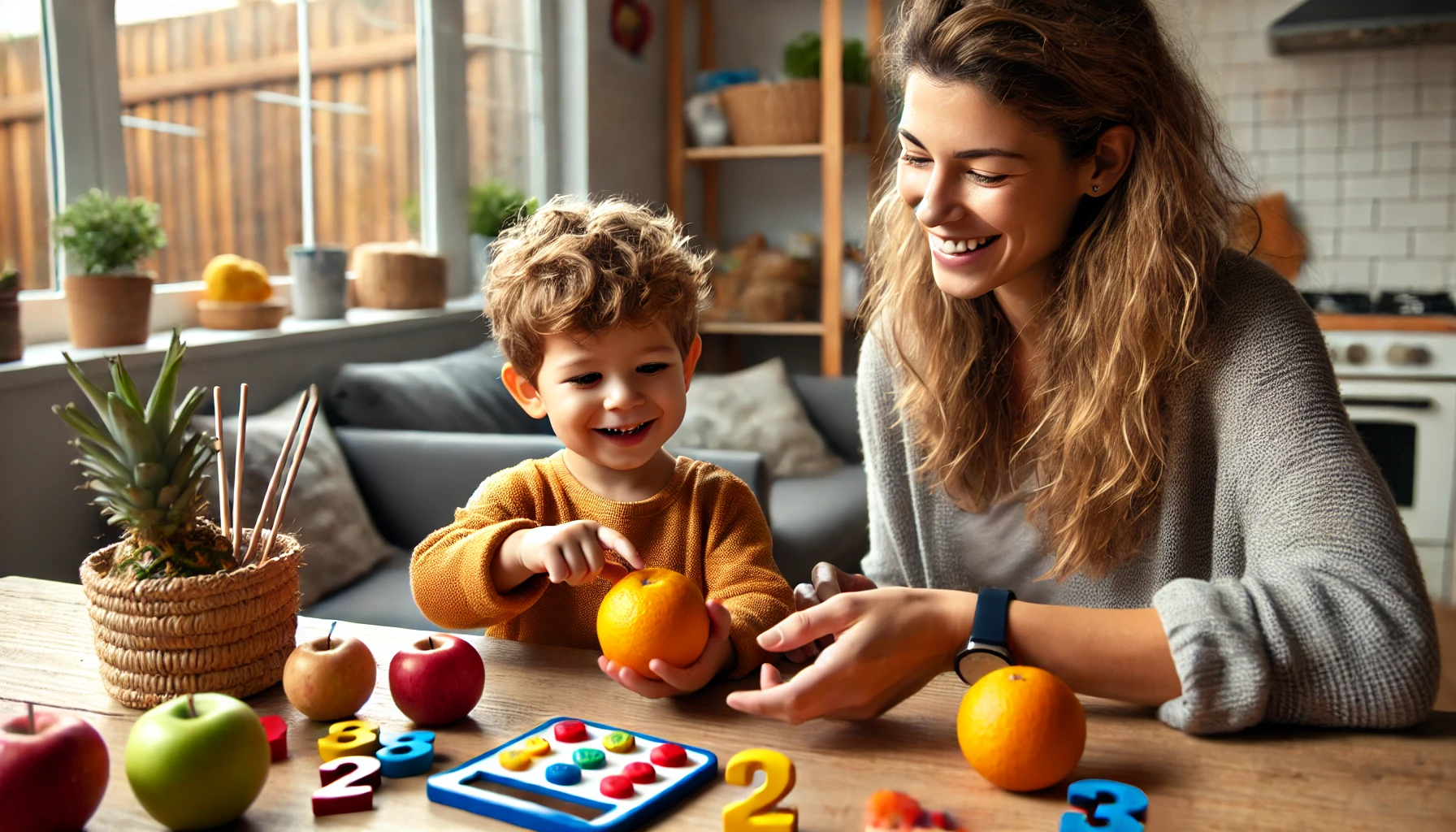Learning numbers doesn’t have to be limited to flashcards and worksheets. In fact, some of the most powerful math lessons happen in real life—at the kitchen table, during playtime, or even on a walk around the neighborhood. By turning everyday moments into fun opportunities to explore numbers, you help your child build a strong foundation in math with ease and enjoyment.
Here’s how to teach your child about numbers and counting in a way that feels natural, playful, and meaningful.
Why Early Number Skills Matter
When children begin to understand and use numbers in daily routines, they:
- Develop early math confidence
- Strengthen problem-solving skills
- Build logical thinking
- Prepare for school success
And best of all? They start to see math as something useful and fun.
Everyday Moments to Practice Numbers and Counting
1. Count Everything Together
Counting out loud with your child turns any moment into a math lesson. Try:
- Steps as you walk up stairs
- Spoons while setting the table
- Pieces of fruit during snack time
- Blocks while building towers
👉 Use a slow and steady rhythm: “One… two… three…” This helps children connect the words with actual quantities.
2. Use Mealtime as Math Time
Mealtime is perfect for counting and comparing:
- Count how many carrots are on the plate
- Divide cookies equally among family members
- Compare sizes: “Which cup is taller?”
Encourage your child to help with serving and sorting to build one-to-one correspondence skills.
3. Play with Numbers During Cleanup
Turn tidying up into a counting game:
- “Let’s put 5 toys in the box together—ready? One, two, three…”
- “How many red blocks can we find?”
- “Can we sort your cars by color and count how many of each we have?”
These small challenges keep kids engaged and reinforce number awareness.
4. Use Songs and Rhymes with Numbers
Classic counting songs are powerful tools for early math:
- “Five Little Ducks”
- “One, Two, Buckle My Shoe”
- “Ten in the Bed”
- “This Old Man”
Singing builds memory, rhythm, and sequence skills—all important for math.
5. Incorporate Numbers into Play
Whether your child is playing pretend kitchen or building a train track, sneak in some number fun:
- Label toy bins with numbers
- Pretend to “buy” and “sell” items using pretend money
- Count passengers in a toy bus
- Build towers with a certain number of blocks
Let play lead the way, and numbers will follow naturally.
6. Use Books About Counting
Reading together reinforces math vocabulary and introduces new concepts. Look for books like:
- Ten Black Dots by Donald Crews
- Chicka Chicka 1 2 3 by Bill Martin Jr.
- Mouse Count by Ellen Stoll Walsh
- Count the Monkeys by Mac Barnett
Pause while reading to ask:
- “How many animals are on this page?”
- “Can you find the number 7?”
7. Point Out Numbers in the Environment
Everywhere you go, there are numbers! Help your child spot them:
- On house doors
- Elevators
- Clocks
- Price tags
- Street signs
Make it a game: “Let’s find the number 3 on our walk!”
8. Use a Calendar and Daily Routines
Calendars are full of learning opportunities. Each day, point to the number of the date and count up to it. Ask questions like:
- “What number comes after 5?”
- “How many days until the weekend?”
- “Can you find the number 12?”
Routines like brushing teeth for 2 minutes or reading 3 books at bedtime also reinforce number sense.
9. Introduce Basic Math Through Story Problems
Simple word problems during play can make early math more real:
- “You have 3 apples and I give you 2 more—how many now?”
- “You had 5 cookies and ate 1—how many are left?”
Use fingers, toys, or drawings to help your child visualize the solution.
10. Play Counting and Number Games
Try games like:
- Dice rolling and counting
- Number puzzles
- Memory games with number cards
- Hopscotch with numbers
- “Number hunt” scavenger games around the house
These games make learning active and exciting.
Tips to Make Learning Numbers Stick
- Be consistent: Use number words often in daily conversations
- Be patient: Allow your child to count at their own pace
- Celebrate effort: Focus on trying, not perfection
- Keep it fun: If it feels like a game, they’ll want to do it again
Final Thoughts: Math Is Everywhere
You don’t need a math degree or a fancy curriculum to teach numbers. All it takes is curiosity, creativity, and a little bit of playfulness.
By weaving numbers into everyday life, you help your child see math as something friendly, useful, and even magical. From counting peas to reading the calendar, the world becomes their classroom—and you, their favorite teacher.
So next time you’re walking, cooking, or tidying up—start counting. They’re learning more than you think.
